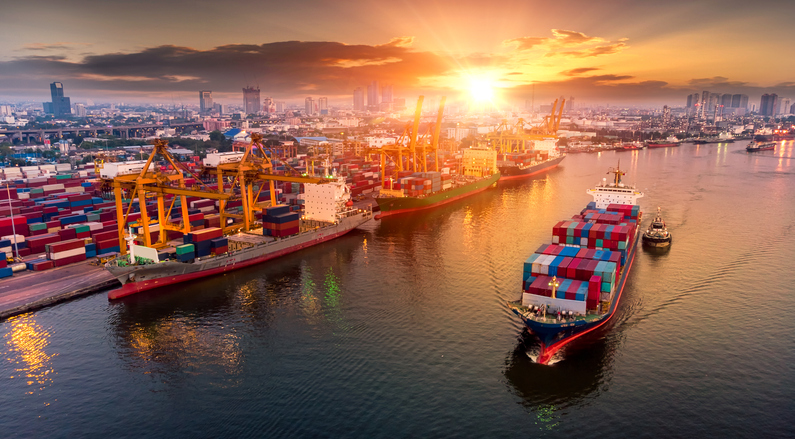China to U.S. trade route has been seeing a recent surge in Container Leasing Charges per Route as observed in its September Container Market Forecaster published by Container xChange, an online container logistics platform.
The Container Leasing Charge per Route is the highest on the China to U.S. trade route and 6 trade routes on this lane are in the top 7 most expensive leasing charge routes. This potentially indicates that these routes are experiencing a high demand for shipping containers and may experience elevated leasing charges as suppliers adjust prices to match market conditions.
Further, the routes may also be experiencing this surge in container leasing charges based on seasonal demand, such as during peak holiday shipping periods.
Back-to-School Rush Sparks Optimism in Container Transportation Sector
The National Retail Federation has reported that this year’s back-to-school shopping season is going to be a big one. People are expected to spend a lot, around $41 billion, which is way more than what they spent before the pandemic in 2019, which was $26 billion. Also, each household is likely to spend more, going up from $697 to $890 per person for this year, without considering price increases.
Further, the Global Port Tracker report from the National Retail Federation and Hackett Associates predicts that the import cargo volume at significant US container ports will hit 2 million TEUs (twenty-foot equivalent units) during September and October. This optimistic outlook from retailers indicates their confidence in the upcoming holiday season.
This optimism is also evidenced by the highest-ever Container Price Sentiment Index (xCPSC). The index has seen an uptick in price sentiment starting August 2023.
The Container Price Sentiment Index (xCPSI) conducts market surveys simultaneously, gathering the combined insights of industry experts on container price trends and quantifying them. This creates a useful measure that offers insights into what to expect in the container market soon. From August to September, the survey drew participation from 1045 supply chain professionals.
This surge in sentiment reflects the industry’s growing belief in an upcoming turnaround, injecting a sense of optimism into the landscape.
For now, the surge in back-to-school shopping is causing a temporary increase in the demand for shipping containers. However, changes in the way Americans approach holiday shopping, influenced by economic factors, could impact consumer confidence.
“If you look at the US, the market looks relatively upbeat. US inflation is expected to remain relatively stable at 0.2 percent month-on-month, coupled with a strong labor market. Jobless claims are still at relatively low levels, and retail spending is increasing slightly. All those points towards a soft landing, as also mentioned by Fed Chief Yellen over the weekend., said Christian Roeloffs, cofounder and CEO of Container xChange.
Roeloffs added, ‘Then looking back at Europe, we have the interest rate decision coming in on Thursday. There’s a lot of speculation in the market on whether the ECB will pause its interest rate hike at 4.25 percent. Now, that’s the consensus, seeing signs of weakness on the economic front.’
Over the past year, the cost of living has risen by 3.2%, with notable increases in essential categories such as groceries (up by 4.9%), electricity (up by 3.0%), and housing costs (up by 7.7%). This trend of rising prices may lead to fluctuations in container demand, with periods of high demand followed by reduced spending, which could affect the availability of containers.
According to the Federal Reserve Bank of San Francisco, as of June 2023, American households had saved less than $190 billion in excess funds from the pandemic. With rising interest rates, increased essential expenses, and the start of monthly student loan payments totaling around $10 billion beginning in October, the remainder of 2023 could prove challenging for consumer spending. This challenging economic landscape may have a negative impact on the approaching holiday season.
The decrease in container prices in China suggests that there is an excess supply of containers within the Chinese market. This oversupply may be driven by various factors, including reduced domestic demand for containers, increased production of containers within China, or the availability of surplus containers from previous shipping activities.
Further, the container market is highly competitive, and prices can fluctuate based on supply and demand dynamics. With falling prices in China, it indicates that container providers may be trying to attract customers by offering more competitive pricing to counterbalance the high leasing charges on the China to USA route.
The Freight Rate Index for 40ft containers by Freightos Baltic Index (FBX) from Freightos Data shows a slight dip in the freight rate on the China/East Asia- North America West Coast of –7%, currently at $ 1,887. There is also a marginal dip in the freight rate on the China/East Asia- North America East Coast of –0.9%, currently at $ 3,048.
This typically indicates a classic case of supply and demand dynamics where an increase in the supply of available cargo space (container ships) coupled can lead to lower freight rates.
The freight rate is also influenced by the level of competition among shipping companies and carriers operating on the China to the US route. Intense competition can drive rates down as carriers for market share.
Source: Hellenic Shipping News






